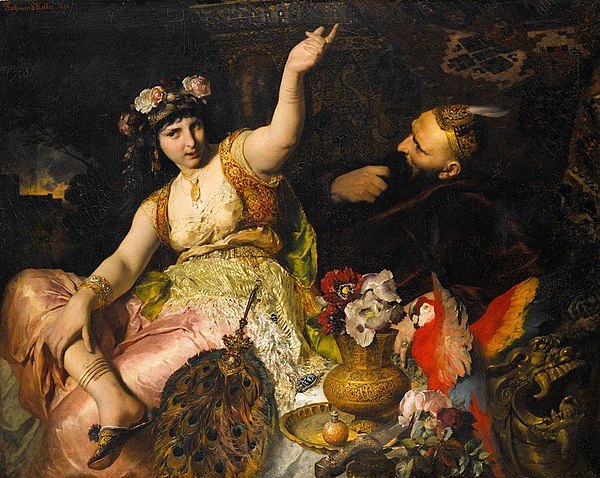
750 - 1258
Abbasid Caliphate
Abbasid Caliphate ແມ່ນ caliphate ທີສາມທີ່ຈະສືບທອດສາດສະດາອິດສະລາມMuhammad .ມັນໄດ້ຖືກສ້າງຕັ້ງຂຶ້ນໂດຍລາຊະວົງທີ່ສືບເຊື້ອສາຍມາຈາກລຸງຂອງ Muhammad, Abbas ibn Abdul-Muttalib (566-653 CE), ເຊິ່ງມາຈາກຊື່ຂອງລາຊະວົງ.ພວກເຂົາເຈົ້າໄດ້ປົກຄອງເປັນ caliphs ສໍາລັບ caliphate ສ່ວນໃຫຍ່ຈາກນະຄອນຫຼວງຂອງພວກເຂົາໃນ Baghdad ໃນຍຸກປະຈຸບັນຂອງອີຣັກ, ຫຼັງຈາກໄດ້ໂຄ່ນລົ້ມ Umayyad Caliphate ໃນການປະຕິວັດ Abbasid ຂອງ 750 CE (132 AH).Abbasid Caliphate ທໍາອິດໄດ້ຕັ້ງສູນກາງລັດຖະບານຂອງຕົນຢູ່ໃນ Kufa, ອີຣັກທີ່ທັນສະໄຫມ, ແຕ່ໃນປີ 762 caliph Al-Mansur ໄດ້ສ້າງຕັ້ງນະຄອນ Baghdad, ໃກ້ກັບນະຄອນຫຼວງ Babylonian ບູຮານຂອງ Babylon.Baghdad ໄດ້ກາຍເປັນສູນກາງຂອງວິທະຍາສາດ, ວັດທະນະທໍາ, ປັດຊະຍາແລະການປະດິດສ້າງໃນສິ່ງທີ່ກາຍເປັນທີ່ຮູ້ຈັກເປັນຍຸກທອງຂອງອິດສະລາມ.ໄລຍະເວລາ Abbasid ໄດ້ຖືກຫມາຍໂດຍການຂຶ້ນກັບ bureaucrats ເປີເຊຍ (ໂດຍສະເພາະຄອບຄົວ Barmakid) ສໍາລັບການປົກຄອງອານາເຂດເຊັ່ນດຽວກັນກັບການເພີ່ມຂຶ້ນຂອງຊາວມຸດສະລິມທີ່ບໍ່ແມ່ນແຂກອາຫລັບຢູ່ໃນ ummah (ຊຸມຊົນແຫ່ງຊາດ).ຮີດຄອງປະເພນີຂອງເປີເຊຍໄດ້ຮັບການຮັບຮອງເອົາຢ່າງກວ້າງຂວາງໂດຍພວກຊົນຊັ້ນສູງທີ່ປົກຄອງປະເທດ, ແລະພວກເຂົາເຈົ້າໄດ້ເລີ່ມຕົ້ນການສະໜັບສະໜູນຂອງນັກສິລະປິນແລະນັກວິຊາການ.ເຖິງວ່າຈະມີການຮ່ວມມືໃນເບື້ອງຕົ້ນນີ້, Abbasids ໃນທ້າຍສະຕະວັດທີ 8 ໄດ້ແຍກຕົວອອກຈາກ mawali ທີ່ບໍ່ແມ່ນແຂກອາຫລັບ (ລູກຄ້າ) ແລະ bureaucrats ເປີເຊຍ.ພວກເຂົາຖືກບັງຄັບໃຫ້ມອບສິດອໍານາດເຫນືອ al-Andalus (ສະເປນ ແລະ ປອກຕຸຍການ ) ໃຫ້ກັບ Umayyads ໃນປີ 756 , Morocco ກັບ Idrisids ໃນປີ 788, Ifriqiya ແລະ Sicily ກັບ Aghlabids ໃນ 800, Khorasan ແລະ Transoxiana ກັບ Samanids ແລະ Persia ກັບ Saffarids in the Saffarids. ຊຸມປີ 870, ແລະອີຢິບ ເຖິງ Isma'ili-Shia caliphate ຂອງ Fatimids ໃນປີ 969. ອໍານາດທາງດ້ານການເມືອງຂອງ caliphs ໄດ້ຖືກຈໍາກັດດ້ວຍການເພີ່ມຂຶ້ນຂອງ ອີຣ່ານ Buyids ແລະ Seljuq Turks , ຜູ້ທີ່ໄດ້ຍຶດ Baghdad ໃນ 945 ແລະ 1055, ຕາມລໍາດັບ.



































